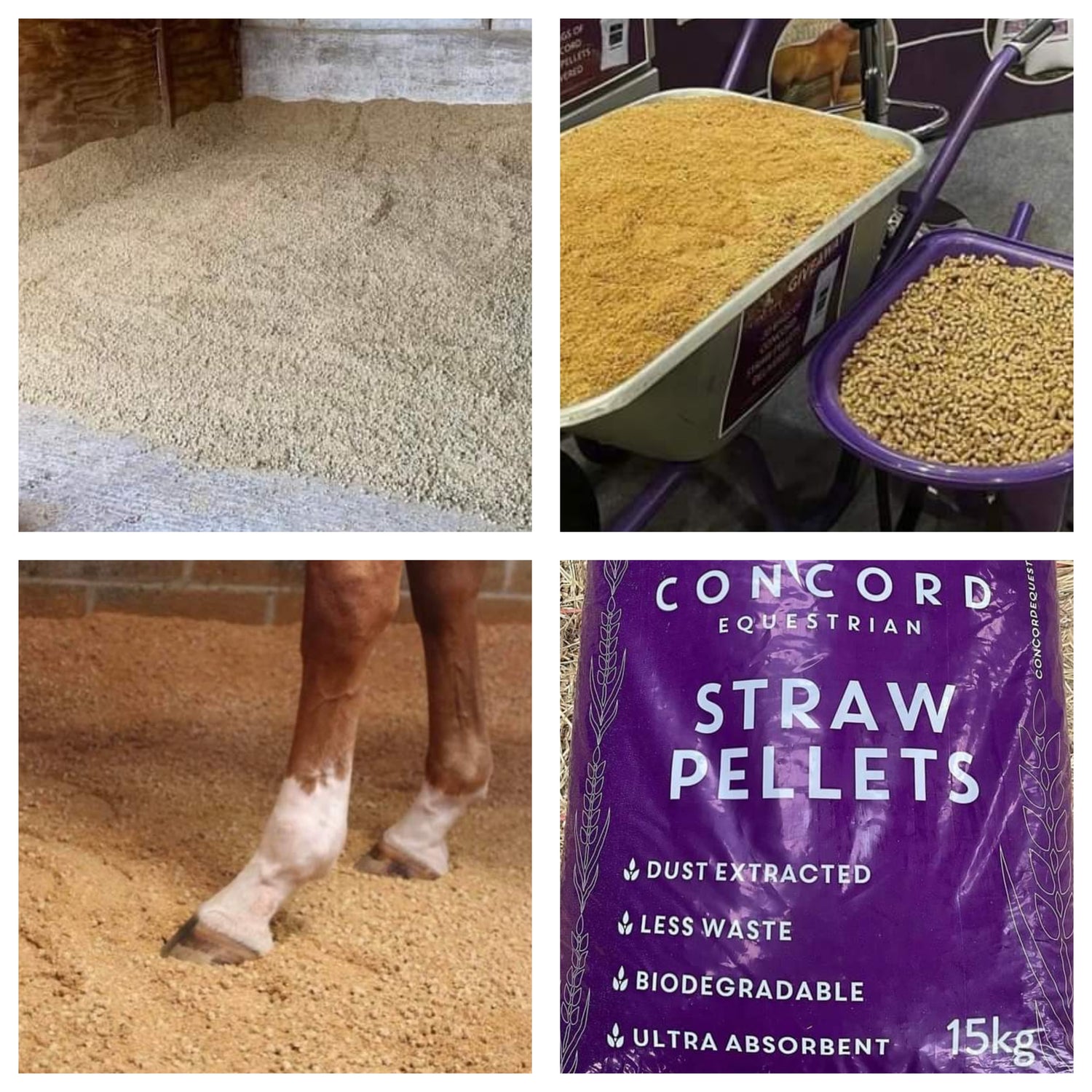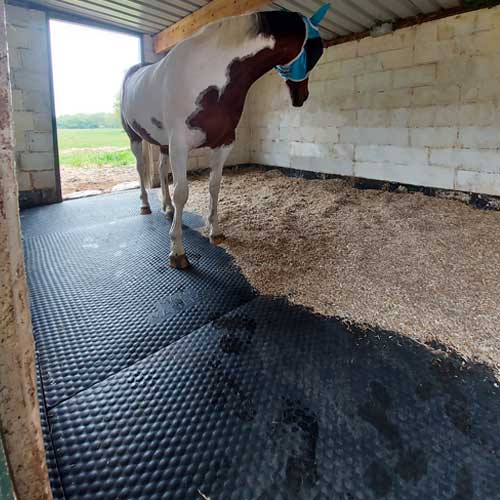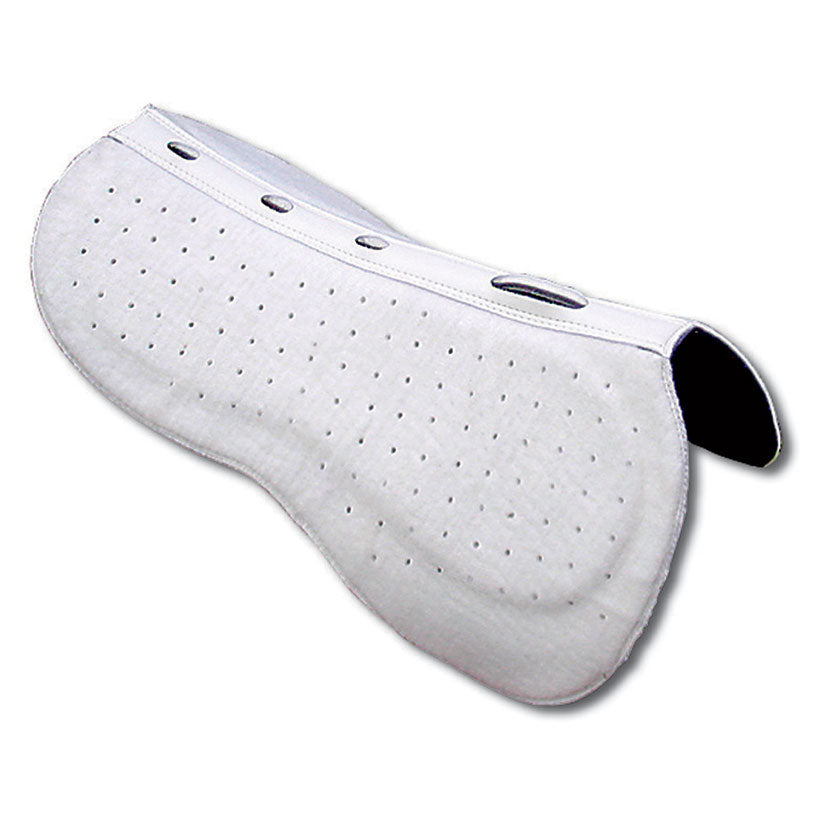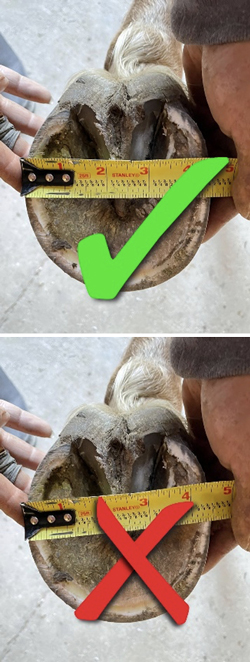Experience Natural Freedom for Your Horse with Cavallo Hoof Boots.
Discover the benefits of using premium Cavallo hoof boots for your barefoot horses. Ensure optimal comfort, traction, and durability with our selection.
Hoof Boots in Action
Protect your horse's hooves with our durable and comfortable hoof boots. Ideal for hard, rough, stony, frozen terrains.
Reliable Supplies for Horses and Ponies.
Benefit from over 30 years of experience in horse care and management. Trust us for expert advice on Cavallo Hoof Boots.


Invest in
Mayo Horse Comfort Mattress
Durable, proven comfort, investment, time and bedding saving.

Contact form
Knowledge and Helpful Advice

Measuring and Fitting
Please see the measuring chart for the measurement ranges.
Choose the boot size that corresponds to the range.
Measure within a week of a fresh trim.
You can take a photo of your measuring attempts and send to me for confirmation.
The Cavallo range of horse hoof boots is renowned world wide.
The range includes the Cavallo hoof Boot Styles: Trek, Trek Pro, Simple, Sport, Entry Level Boots, Cute Little Boots and Big Foot Boots.
The most important thing for a comfortable horse is getting the correct fit.
Measure carefully following the guide below:


1, Measurements are best taken directly after a trim.
2, Clean the hoof with hoof pick and brush to remove all debris.
3, Make sure the lighting is suitable and tape measurements are visible and clear.
4, Keep the tape measure in a straight line, through the line of symmetry. The line through the centre of the hoof, splitting it equally in two parts. NOT at an angle like farriers do to measure for shoes.
5, Both measurements are needed the width and the length.
Length -Taken from the tip of the toe to the Buttress Line- where the outer hoof wall turns back towards the frog at the heel of the hoof. Do not include the bulb of the heel in this measurement.

Width - Taken across the hoof from side to side at the widest point.
If the width is smaller than the length (an oval shaped hoof), then the fit of the boot will be a slim fit. If the width of the hoof is the same as the length, or up to one Cavallo hoof boot size larger than the length of the hoof, then the fit will be a regular.

It is often found that the hind hooves are narrower than the front hooves. However, this is not a hard and fast rule.
It is recommended you stick to the same Style boot for left and right hooves on either front or hind feet. For example have regular boots on the front two hooves and slim boots on the hind.
|
Sizing Chart |
||||
|
Length (Inches) |
Length (mm) |
Size |
Width |
Regular/ Slim? |
|
2 3/8” - 2 11/16” |
62-71 |
CLB M1 |
51 - 61 mm |
Slim |
|
2 3/4”- 3 1/8” |
72-82 |
CLB M2 |
62 – 72 mm |
Slim |
|
3 3/16” – 3 5/8” |
83-92 |
CLB M3 |
73 - 82 mm |
Slim |
|
3 11/16” – 4” |
93-102 |
CLB M4 |
83 – 92 mm |
Slim |
|
4” – 4 ¼”
|
102-109 |
0 |
If the width is less than the length |
Size 0 Slim |
|
If the width is the same or up to 1 size larger than the length |
Size 0 Regular |
|||
|
4 5/16 – 4 9/16” |
110-117 |
1 |
If the width is less than the length |
Size 1 Slim |
|
If the width is the same or up to 1 size larger than the length |
Size 1 Regular |
|||
|
4 5/8” – 4 7/8” |
118-125 |
2 |
If the width is less than the length |
Size 2 Slim |
|
If the width is the same or up to 1 size larger than the length |
Size 2 Regular |
|||
|
4 15/16” – 5 3/16” |
126-133 |
3 |
If the width is less than the length |
Size 3 Slim |
|
If the width is the same or up to 1 size larger than the length
|
Size 3 Regular |
|||
|
5 ¼ “ – 5 ½ “ |
134-141 |
4 |
If the width is less than the length |
Size 4 Slim |
|
If the width is the same or up to 1 size larger than the length |
Size 4 Regular |
|||
|
5 9/16 “– 5 13/16 “ |
142-149 |
5 |
If the width is less than the length |
Size 5 Slim |
|
If the width is the same or up to 1 size larger than the length |
Size 5 Regular |
|||
|
5 7/8” – 6 1/8 “ |
150-157 |
6 |
If the width is less than the length |
Size 6 Slim |
|
If the width is the same or up to 1 size larger than the length |
Size 6 Regular |
|||
|
6 3/16" - 6 7/16" |
158 - 165 |
BFB 7 |
Big Foot Boot size 7 are only available in regular fit. |
|
|
6 1/2" - 6 3/4" |
166 - 173 |
BFB 8 |
Big Foot Boot size 8 are only available in regular fit. |
|
|
6 13/16" - 7 1/16" |
174 - 181 |
BFB 9 |
Big Foot Boot size 9 are only available in regular fit. |
|
|
7 1/8" - 7 1/2" |
182 - 189 |
BFB 10 |
Big Foot Boot size 10 are only available in regular fit. |
|
Choosing the Type of Boot
When it comes to the decision of which boot type, there are many things to consider.
- Do you want an all leather boot? If so you may want to look at the Simple boot.
- Do you want to purchase single boots? If so you should be looking at either Trek or ELB boots.
- Do you want a boot that tightens around the pastern for fine boned horses? Trek and ELB tighten best around the pastern.
- Alternatively, do you want a wide boot to accommodate a lot of feather? You may want to look at the Simple or the Sport boots.
- Worried about your horse's feet being too big for hoof boots? Check out the Big Foot Boots, the largest size accommodating a length of 182-189 mm.
Hints and Tips
- We find that if you are on the cusp between two sizes the smaller of the two is usually the better fit.
- Gel pads and Comfort Pads are available if you want some additional impact absorption in the base of the boot, ideal for horses recovering from hoof injury for example.
- If you are trying boots for the first time and worried about rubbing around the collar, pastern wraps are available to provide additional protection in this area.
- Like your own leather shoes the boots will mould to the shape of the horse’s hooves in time. Wear the boots for limited time initially (about 20 minutes and then gradually build the time up) whilst they mould into the hoof shape and the horse becomes familiar with them.
For help with the measuring guide email: louise@horseandmore.co.uk or ring 07711 685623.
Answers to Frequently Asked Questions about Cavallo boots
Yes the boots can be used to ride out in.
Yes the boots are suitable for turn out.
Yes they will help and support the recovery of your laminitic pony.
Yes they will make your horses more comfortable on rough terrain,
Yes they are durable and the only boots to have a 180 day warranty.
How do I know if I've got the right size of hoof boot?
If the boot is the right size it should just snap on to the hoof easily. You should not have to force it on. If the boot is rotating independently from the horse’s hoof, it is too big. Wiggle room is fine as it will allow the hoof to expand during weight bearing and movement. Always break the boots in gently as you would with your own shoes. We suggest just 20 minutes initially and to build up over time. Pastern wraps can help with the breaking in process as can keeping the boots softened with leather dressing.
What size of Cavallos should I get for my horse?
Always measure the hoof after a fresh trim and do not include the heel bulb in this measurement - a common mistake. To find the right size of Cavallo hoof boots you need to measure from toe to buttress line (where the horn curves back to the frog). Stay within the hoof size range on the chart as space for growth between trims has been allowed for.
Although you only need the weight bearing length to determine size, it is also a good idea to check the hoof width at the widest point. This helps establish if you need regular or slim fit hoof boots. Measure each hoof separately as they can vary in size. (If you've got different sized hooves it may be worth considering the Cavallo Trek or Entry Level Boots as these designs are available in singles.)
The regular hoof boot in any style across the Cavallo range will fit a hoof where the width exceeds the length by up to one size, but may not be suitable where the hoof has excessive flare. It is perfect when the hoof is the same length and width.
The Slim fit hoof boot across the range is the same length as the regular boot, but is 5 mm narrower, so is suitable for the narrower hoof. It is often the choice for the hind hooves.
When trying on hoof boots for the first time we suggest that this is done on a clean dry surface and that the hoof is covered with a plastic bag or clingfilm to keep the boots clean and dry.
Fitting Tips
- The entire weight bearing wall from front of toe to heel buttress should sit within the boot outsole.
- The boot tongue should be pushed against the hoof, the outer flaps drawn firmly around pressing the Velcro on the flaps against the Velcro on the tongue keeping the outer cover taut and level.
- If the boots twist excessively it may mean they are too big or that the outer cover is too loosely fastened.
- If you find it hard to get the boot on, it is probably too small. The hoof boot should just “snap” on for a good fit.
- Pastern wraps can be used to assist with the breaking in process and to prevent chafing.
- Gel pads are great if the hoof is sensitive for extra comfort or to help tighten up the boot if slightly loose after a fresh trim.
- Once fitted if the boot straps (Simple boots only) are too long then you can cut to size leaving a line of stitching to prevent unravelling. Each pair of Simple boots comes with a little bag of keepers to help prevent the straps from flapping.
How long do Cavallo hoof boots last?
This can vary depending upon a number of things such as frequency of use, the sort of ground you are riding on, frequency of trims and so on. In the average situation if you take care of your boots you should expect them to last between one and two years. They are more economical than metal shoes and provide more comfort and freedom for your horses's feet.
Are Cavallo Hoof Boots just for front feet?
Cavallo hoof boots can be used on either front or hind hooves. Most of the weight bearing for the horse is on the front (70%) and conditions such as navicular, laminitis, abscessing and bruising more commonly affect the front hooves too.
A lot depends on the horse and how well his hooves are conditioned to the terrain. A good plan is to start with the front and monitor how things go. If you do need boots for the hind hooves, ensure you measure separately as they will probably be a different size and shape to the front. We find that the slim are sometimes a better fit for the hind.
Should I buy Simple, Sport, Trek or Entry Level (ELB) hoof boots for my horse?
The Cavallo Simple hoof boot is the all terrain, multi-purpose “hiking boot” if you like. It has a full leather upper. The Sport hoof boot is the lighter “action” boot with a built in break-over and heel skid break. It’s slightly lighter than the Simple boot and has reflective piping to increase visibility. The Trek is our 'top of the range' boot. It is made of TPU and sold in singles. The very affordable ELB is the latest addition.
Both the Trek and the ELB have Cavallo’s signature front opening system and both have built in drainage and a soft foam filled leather collar with back-flap bulb protection.
For hooves that are as wide as long go for regular fit. For hooves that are long and narrow go for slim fit.
How long can Cavallo hoof boots be worn at any one time?
Cavallo hoof boots are like your own shoes – they become more comfortable over time. Keep the leather supple by using a good leather conditioner such as Horseman’s One Step. Break the boots in over time. We suggest wearing them for no more than 20 minutes to start with and gradually increasing the time whilst monitoring hoof comfort.
Cavallos can be worn for extended periods of time once fully broken in and once the horse has become used to them. Boot usage should continually be monitored and boots should always be removed daily to check there are no problems developing. Pastern wraps can be used to help prevent chafing and to stop debris getting into the boot particularly if you have a fine boned horse or pony.
If you notice excessive wear or any foot problems, remove the boots immediately.
Can I use Cavallo boots on top of metal shoes?
Many people do use Cavallos on top of metal shoes, although they are really designed to be used on the barefoot horse. When used over metal shoes the Cavallo boot TPU (thermo plastic urethane) sole can help absorb shock and can help prevent bruising during transportation or whilst working on hard surfaces.
Unfortunately the Cavallo guarantee is void for usage over shoes.
What other uses are there for Cavallo hoof boots?
Cavallo boots are designed for the barefoot horse for riding in. However Horse and More does hear of Cavallos being successfully used for other purposes. We ourselves have used the boots for our youngster during loading to prevent damage to her hooves as she has a tendency to catch them on the ramp. We have also used them when our horses have had foot abscesses. The boots in this situation have been used both during turnout and in the stable and last winter they were the only successful way of keeping a poultice in place. Boots are used to help horses with tender feet travel across stony ground even if it is just between the stable and the paddock. We also know of a top show jumper who wears Cavallo hoof boots during turnout to help prevent him pulling off his shoes.
Clearly with any of these alternative uses you need to monitor carefully yourself.
Can studs be used with Simple boots?
Most riders in the UK do not use studs in their Cavallo boots. However, if you do require them we can supply from Horse and More. If you do decide to use studs to increase traction you must take care to ensure they do not extend through the sole of the boot and cause discomfort. The warranty would not cover use of studs.
Are Cavallo Boots good for Laminitics and horses with Navicular Disease?
Cavallos are often chosen for horses or ponies suffering from detrimental hoof conditions such as Laminitis or Navicular Disease. They provide comfort for the horse and will encourage movement and promote blood circulation. In these situations we would recommend gel pads are also used.
Will Cavallos fit my Shetland?
Yes, Cavallo do manufacture two sizes of Cute Little Boots and we stock these at Horse and More.
Delivery on Concord Pellets
Delivery times on Straw pellets are different to Cavallo Boots, they always come direct from the manufacturer.
Mayo Comfort Horse Stable Mattress questions
What does EVA stand for?
EVA is Ethyl Vinyl Acetate. Essentially it is a closed cell foam. In other words a foam which isn’t a sponge. So it’s hard wearing and non-absorbent, but also cushioning and insulating due to the high air content.
Are Horse Comfort mats also called Mayo Mats?
Yes they are. Horse Comfort mats are from the Mayo Mat range which has been on the market for over 25 years. These mats have stood the test of time and have the Mayo Mat commitment that they will not crack, curl or lose their softness.
Is Cow Comfort another Mayo Mat brand?
Yes it is. Mayo mats were originally developed for dairy cow cubicles because the comfort of a cow is supremely important for milk production. Horses are pasture animals in the same way that cows are and it was realised that a comfortable bed is just as important for horses.
What is so special about Horse Comfort EVA mats compared to other EVA mats?
Horse Comfort do not use inert fillers in the manufacturing process. These are often used in cheaper copies. Using inferior bonding materials such as clay or rubber would make Horse Comfort mats 15% cheaper. But Horse Comfort do not do this as they would crack and tear.
How long will Horse Comfort Mayo Mats last?
Horse Comfort Premium, Premium Plus and Stable Mattress mats have a 10 year warranty. We do know, however, that many of the original Mayo Mats are still being used successfully 20 years after installation!
Why are Horse Comfort EVA mats better than rubber mats?
Where do I start? Horse Comfort mats are much lighter and so easy to move around for periodic cleaning. They weigh between 7kg and 15kg depending on the thickness you choose. Rubber mats are hard and heavy and we all know how dirty you get just trying to move them around. Horse Comfort mats are cushioning due to their high air content, unlike rubber which can be almost as hard as concrete in some cases.
What size are Horse Comfort stable mats?
The mats are 6ft (1.83m) long and 4ft (1.22m) wide. In terms of thickness we have 20mm (Standard), 24mm (Premium), 34mm (Premium Plus) and 44mm (Stable Mattress) mats.
How do I choose which thickness of mat?
This is largely down to personal choice and budget. The 20mm standard mat is perfect for small ponies or if you want to keep the cost down. This mat is very light weight and comes with a 5 year warranty. For horses I would choose from the 24mm (Premium), 34mm (Premium Plus) or 44mm (Stable Mattress) mats. The Premium mat is great value and nicely cushioning. But the Premium Plus is that bit more luxurious. The 44mm Stable Mattress is a must have if your horse is older or has lameness issues or if you just want to totally pamper him!
Do I still need bedding with Horse Comfort mats?
You do still need bedding to soak up the wet and to keep the mats clean and dry. You can, however, reduce the amount of bedding you need. The cushioning of the mats will help protect your horse from knocks and scrapes from the concrete floor so you don’t need the same depth of bedding.
What is an anti-casting strip?
This is basically a strip of EVA matting which is specially designed with a grooved surface. The strip is attached to the stable wall at a suitable height for your horse. This means that the horse has something to push against to help avoid becoming cast in the stable. If you would like to order anti-casting strips please email louise@horseandmore.co.uk.
Do Horse and More provide wall, trailer and ramps mats in EVA material?
Yes we do. Just email louise@horseandmore.co.uk to ask.





